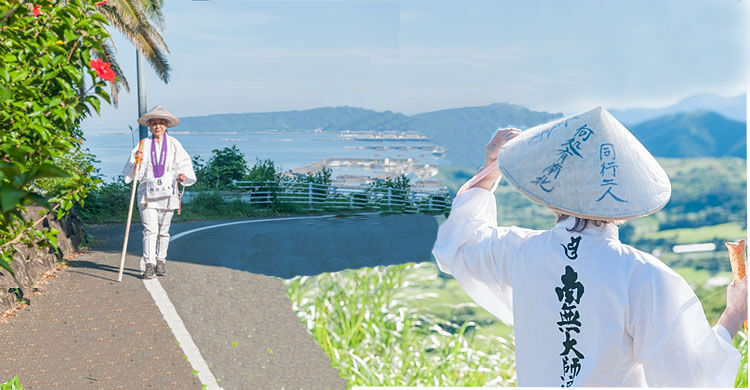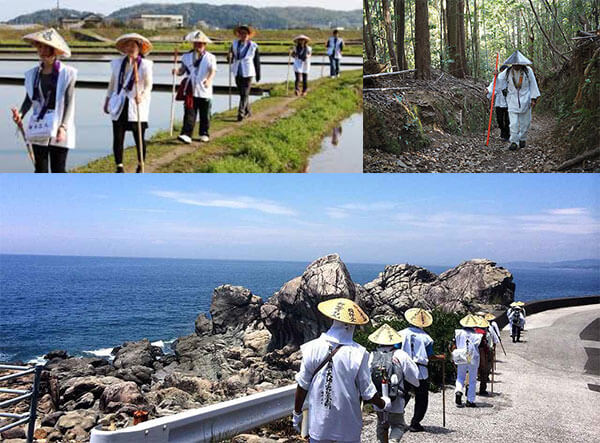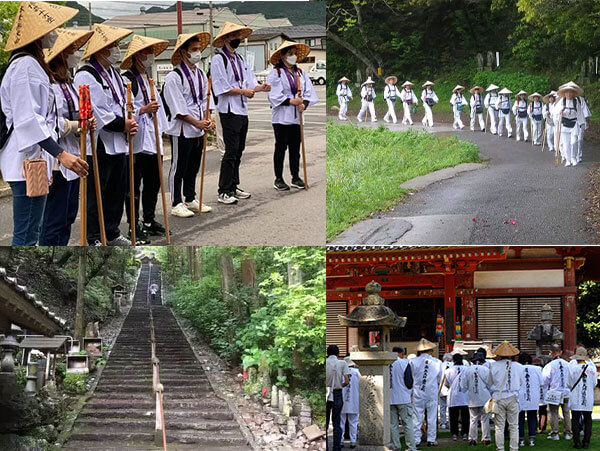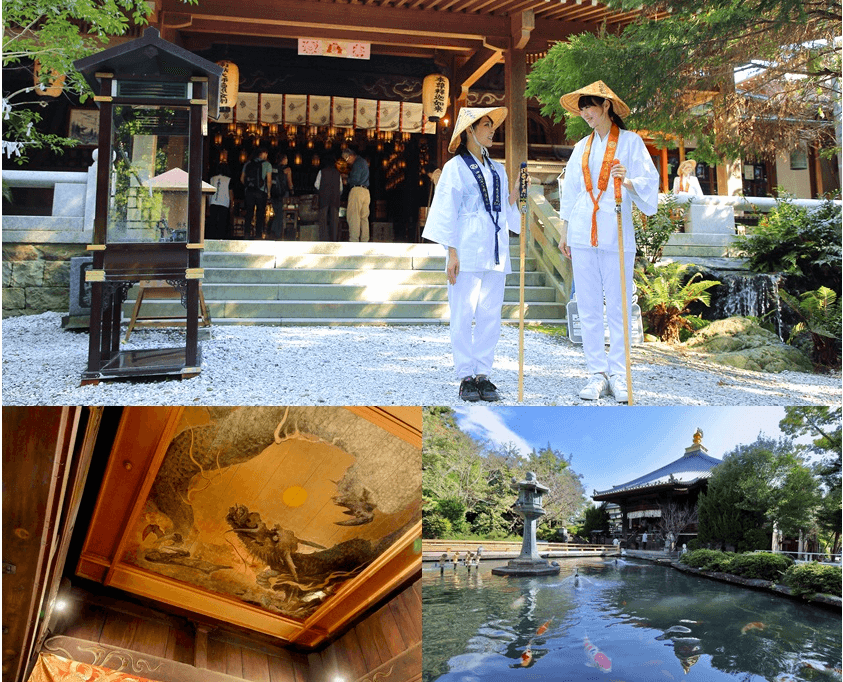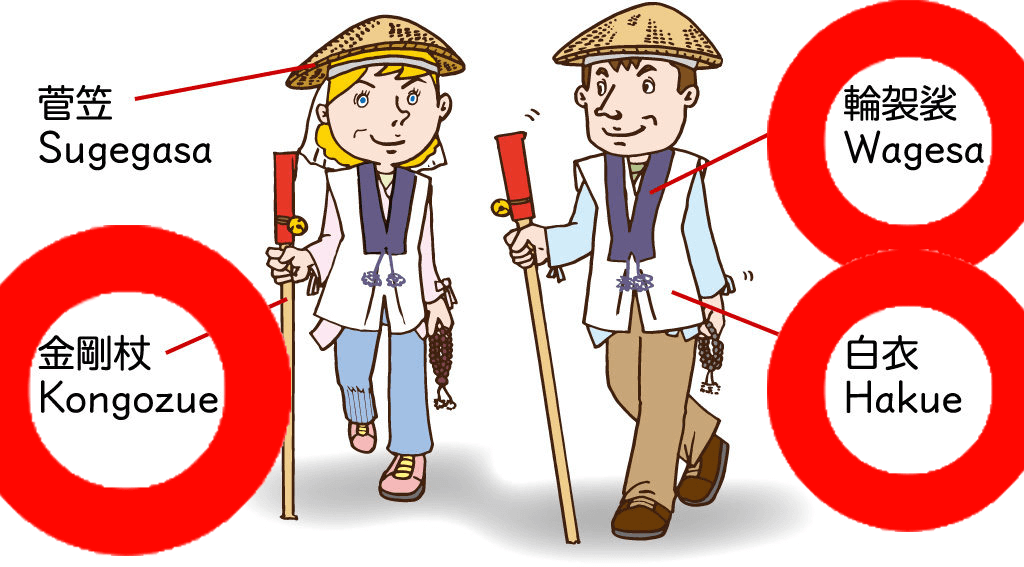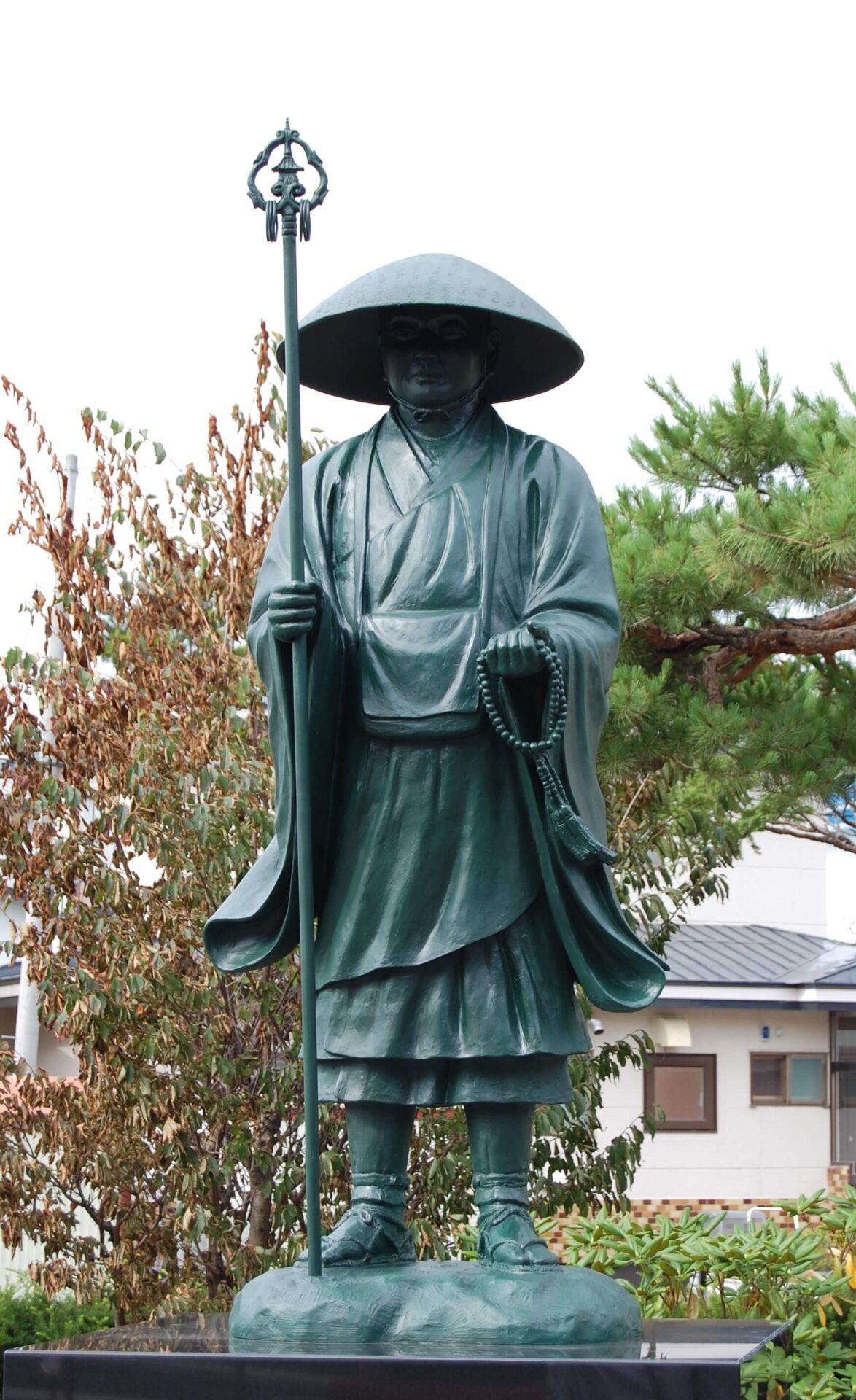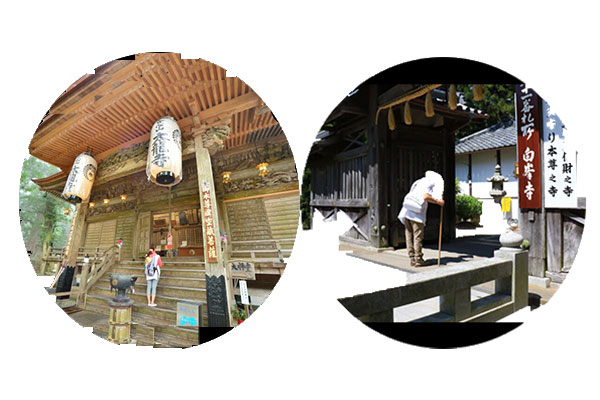Hi everyone how are you? I’d like to talk about Ohenro (pilgrimage) to holy temples which were believed to have been made by Kobodaishi, a nith century Buddhist priest of Shikoku (one of four main archipelagos in Japan, about two-hours fly from Tokyo).
Today, I’m explaining why people go on a pilgrimage visiting at 88 temples while mostly walking about 1,400 kilometers(870 miles) in nearly 40 days to 60 dayson the island of Shikoku .
What’s Ohenro (pilgrimage) ?
Across paddy field, along steep mountain trails, and by the sea. You see some people just walking, and walking regardless of unfavorable weather such as in strong wind, heavy rain, snow and the like. So they’re pilgrims.
The pilgrims wear white robes similar to those worn by the dead. Originally, this signified their wish to be buried on the spot if they died while undertaking this arduous journey.
This particular pilgrim’s robe bears the names of all the temples, and the wearer can collect temple stamps on it. At each temple, the pilgrims offer prayer slips’ and recite a sutra. It’s believed that when they complete the pilgrimage, their prayers will be answered.
This map shows directions to the 88 temples
The pilgrimage is said to have started with the establishment of sacred temples as places of Buddhist training and practice along the path walked by the founder of Shingon Buddhism, Kobo Daishi, when he was 42 years old.
He undertook this pilgrimage to eliminate his own and others’ calamities. It is believed that by visiting all eighty-eight temples, one can rid themselves of eighty-eight earthly desires and receive the blessings and merits of each temple.
Since it is not necessary to visit all the temples at once, anyone can easily start the pilgrimage.
Ryōzenji, the first sacred temple of this pilgrimage, was founded approximately 1300 years ago by Gyoki, under the imperial decree of Emperor Shomu.
The selection of Ryōzenji as the first temple is attributed to Kobo Daishi’s adherence to the principles of the fivefold law of esoteric Buddhism (Enlightenment, Practice, Awakening, Nirvana, and Benefiting Others) and his starting point at the northeastern corner of Shikoku, in the city of Naruto, Tokushima-ken.
From the second temple onwards, until the sixth temple, Anrakuji(Cosy temple), the path continues relatively flat and can be covered in a day’s walk.
Visiting the eighty-eight temples in sequential order, from the first to the eighty-eighth, is called “Jun-uchi.” Going in the reverse order is referred to as “Gyaku-uchi.
In principle, there are no restrictions on clothing, but the three basic items are a white robe “Hakue”, a “Wakesa”, and a “Kongotsue” as follows,
The pilgrims carry walking sticks(Kongotsue) that are said to represent Kobo Daishi. These sticks that are said to represent Kobo Daishi. These sticks make them feel as if he is right there beside them.
What about history?
The pilgrmage dates back about 1,200 years tot the time when the high priest Kobo Daishi travelled around Shikoku to spread Buddhist teachings.
After his death, some priests initiated a pilgrimage retracing the steps that he had taken. Centuries later, during the Edo period, many ordinary people started doing it as well.
After the Second World War, amid the social instability and food shortages, the number of pilgrims decreased sharply.
The situation was rectified by the introduction of pilgrimage package tours by bus. They enabled pilgrims to visit all 88 temples four times faster than on foot. Many people signed up. The pilgrimage became popular again.
Today, 150,000 people including non-natives, 184 (as of 2015) who are mostly from France 39, USA, Taiwan, and Holland, make the Shikoku pilgrimage every year.
They travel on foot, by bus, by car, and various other ways. Some do it not just for religious reasons but to “find themselves”. This journey still holds special significance for many people.
Finally, we have another website which is well worth a visit “Ohenro(Pilgrimage) Couple from London“.thanks

